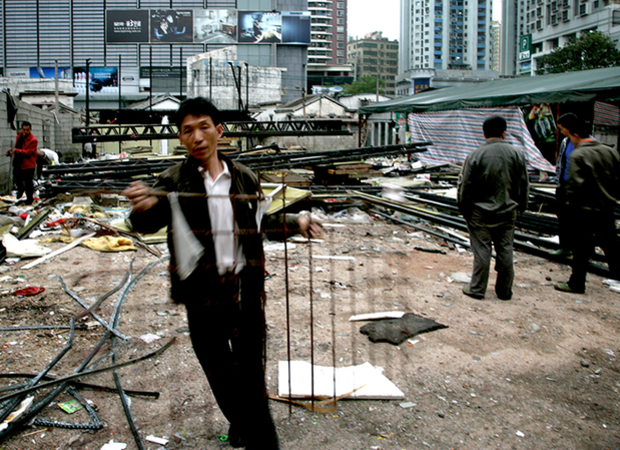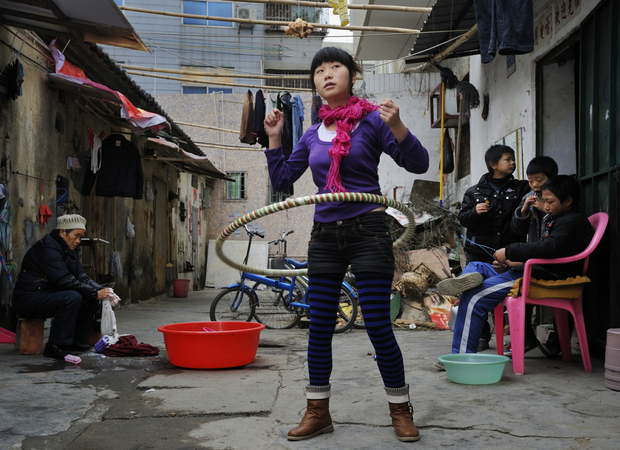Viewpoint
08.09.13Five Years On
On August 8, 2008, I was in Beijing reporting on the media aspects of China’s first Olympic Games, and I am still amazed that the four-hour opening ceremony, as designed by film director Zhang Yimou, was seen by sixty-nine percent of China’s...
ChinaFile Recommends
08.05.13The Chinese Communist Party Has Embraced the Internet—For Public Polling
Atlantic
Beijing has started to glean political intelligence from the same systems they restrict access to.
ChinaFile Recommends
08.05.13The Price of ‘Made in China’
New York Times
The $34 milllion in steel production and fabriation needed to refurbish North America’s longest suspension bridge, the Verrazano-which connects Brooklyn and Staten Island has been outsourced to China.
ChinaFile Recommends
08.05.13Life in a Toxic Country
New York Times
Before this assignment, I reported from Iraq, where foreign correspondents talked endlessly of the variety of ways in which one could die. I survived those threats, only now to find myself wondering: Is China doing irreparable harm to me and my...
ChinaFile Recommends
08.05.13Now Playing: China’s Booming Movie Market
Wall Street Journal
In China, where pirated movies can be bought for less than $1, people are flocking to theaters, a sign of how Chinese consumers are willing to spend more on entertainment.
ChinaFile Recommends
08.05.13Books of the Times—“Five Star Billionaire”
New York Times
Shanghai For Strivers: Tash Aw’s new novel captures China’s changes.
ChinaFile Recommends
07.30.13China Urbanization Cost Could Top $106 Billion a Year
Reuters
The figure is based on the assumption that 25 million people a year settle in cities, with the government spending the money on making sure they enjoy the same benefits in healthcare, housing and schools that city residents have, the Chinese Academy...
ChinaFile Recommends
07.29.13China Orders Ban on New Government Buildings
New York Times
The new directive, which bans the construction of government buildings for the next five years, showed clear signs of being a continuation of the anticorruption campaign, describing the ban as “important for building a clean government” and...
Features
07.24.13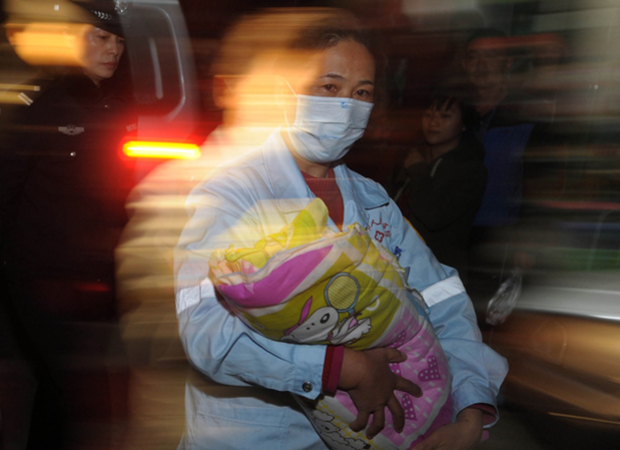
Carried Off
In March 2011, Rose Candis had the worst lunch of her life. Sitting at a restaurant in Shaoguan, a small city in South China, the American mother tried hard not to vomit while her traveling companion translated what the man they were eating with had...
ChinaFile Recommends
07.18.13New Style in Old Beijing (Video)
New York Times
This episode of the ‘Intersection’ video series takes place in Beijing’s Gulou neighborhood, where young Beijingers discuss their and their peers’ fashion styles and inspirations.
ChinaFile Recommends
07.16.13Pitfalls Abound in China’s Push From Farm to City
New York Times
Li Yongping is directing one of the largest peacetime population transfers in history: the removal of 2.4 million farmers from mountain areas in the central Chinese province of Shaanxi to low-lying towns, many built from scratch on other farmers’...
Media
07.15.13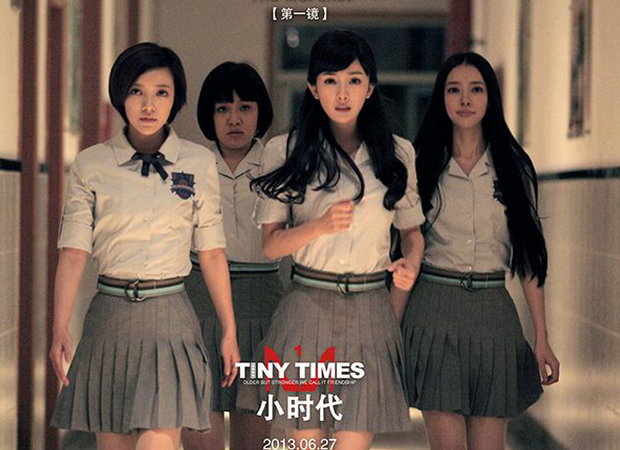
A Rite of Passage to Nowhere
Tiny Times, a Chinese feature film set in contemporary Shanghai, made headline news on its opening day in late June by knocking the Hollywood blockbuster Man of Steel from its perch atop the domestic box-office and breaking the opening-day record...
ChinaFile Recommends
07.11.13Literary Guide to China
Telegraph
Rana Mitter chooses a collection of stories, novels and pieces by writers who either grew up in China or were China implants intended to give the curious a more textured understanding of China’s history and culture.
ChinaFile Recommends
07.11.13‘Chinese Dream’ of a Young Couple in Chengdu [Video]
BBC
China’s economy has grown enormously over the past decade and its middle class is now estimated to number 150 million. The BBC’s Linda Yueh has been speaking to one couple from Chengdu on their desire to live the Chinese Dream.
ChinaFile Recommends
07.09.13A Chinese City is Asking Its Companies to Pay Public Sector Salaries Because It Can’t Afford Them
Quartz
Local government debt is now so unwieldy in China that some desperate city governments, such as that of western Ordos, have turned to the private sector for help to pay their employees.
Conversation
07.03.13
How Would Accepting Gay Culture Change China?
Last week's U.S. Supreme Court decision to strike down the core provisions of the Defense of Marriage Act is not only “a stride toward greater equality in the United States, but also a shift that will reverberate far beyond our shores,” wrote...
Media
06.25.13China’s “Urban Enforcers” Caught in a Vicious Cycle
Last week, another anecdote about chengguan— China’s urban enforcers whose main tasks include enforcing urban beautification ordinances and cracking down on unlicensed street vendors— caught the public’s attention. On June 15, a web user called @岔巴子...
ChinaFile Recommends
06.18.13China’s Great Uprooting: Moving 250 Million Into Cities
New York Times
The ultimate goal of the government’s modernization plan is to fully integrate 70 percent of the country’s population, or roughly 900 million people, into city living by 2025. Currently, only half that number are. &...
Sinica Podcast
06.14.13
China in Images and Words
from Sinica Podcast
This week on Sinica, Kaiser Kuo and Jeremy Goldkorn are delighted to host Matthew Niederhauser. A photographer focusing on urban development in China, Matthew has been published in various journals including The New Yorker, National Geographic, The...
Environment
06.06.13
Wuxi-Düsseldorf and the Challenge of Green City Partnerships
from chinadialogue
At first glance, it isn’t an obvious pairing. Düsseldorf is the fashion and advertising capital of Germany. Wuxi is a fast-growing industrial city on China’s east coast, with probably more coal plants than catwalks. But a German environmental think-...
ChinaFile Recommends
06.06.13Urbanisation: Some Are More Equal Than Others
Economist
Rural migrants living in the handshake buildings are still second-class citizens, most of whom have no access to urban health care or to the city’s high schools. Their homes could be demolished at any time.
ChinaFile Recommends
05.28.13China’s Brutal One-Child Policy
New York Times
In the countryside, where the need for extra hands to help in the fields and the deeply entrenched patriarchal desire for a male heir have created strong resistance to population control measures, officials has been merciless.
ChinaFile Recommends
05.28.13World’s Tallest Building, Sky City, Will Break Ground Next Month
Design Boom
Developed by the Broad Group, this ambitious 220-story building will be constructed by prefabricated pieces which will be put together on-site. Its completion is estimated to tak seven months.
ChinaFile Recommends
05.23.13Instant City
Harper’s Magazine
In the district of Bao’an in Shenzhen, thousands of laborers live in a makeshift city of prefabricated dormitories beside the hulking, mile-long steel shell of what will soon be the city’s newest airline terminal.
ChinaFile Recommends
05.21.13Ai Wei Wei Films Street Brawl (Video)
Sky News
The dissident Chinese artist Ai Weiwei has filmed a fight in China in which dozens of Han Chinese brawled with Tibetans in a street in Beijing. Witnesses said the scrap was between ethnic Tibetan street vendors and Beijing's native Han...
Excerpts
05.15.13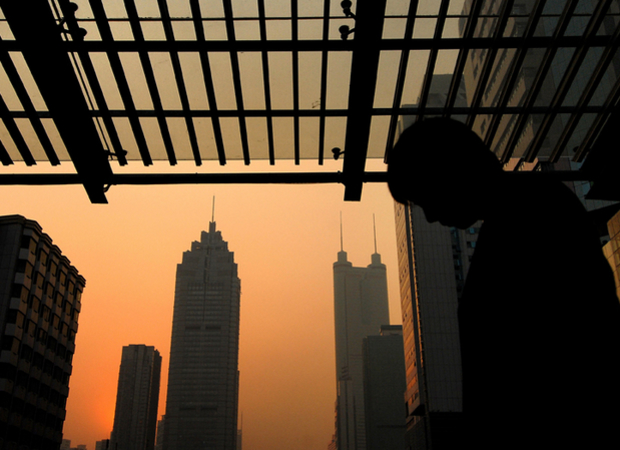
When You Grow Up
Little Lu, Little Zhang, and Little Liu waited for me at the end of the bridge. They were ten, twelve, and fourteen years old, respectively, and they had come from the same village in northern Sichuan Province. They said that they had dropped out of...
ChinaFile Recommends
04.30.13Pollution Is Radically Changing Childhood In China’s Cities
New York Times
Parents are confining sons and daughters to their homes, even if it means keeping them away from friends. Schools are canceling outdoor activities and field trips. Parents with means are choosing schools based on air-filtration systems.
Books
04.23.13
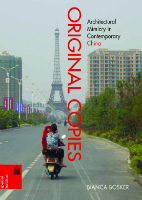
Original Copies
A 108-meter high Eiffel Tower rises above Champs Elysées Square in Hangzhou. A Chengdu residential complex for 200,000 recreates Dorchester, England. An ersatz Queen’s Guard patrols Shanghai’s Thames Town, where pubs and statues of Winston Churchill abound. Gleaming replicas of the White House dot Chinese cities from Fuyang to Shenzhen. These examples are but a sampling of China’s most popular and startling architectural movement: the construction of monumental themed communities that replicate towns and cities in the West.Original Copies presents the first definitive chronicle of this remarkable phenomenon in which entire townships appear to have been airlifted from their historic and geographic foundations in Europe and the Americas, and spot-welded to Chinese cities. These copycat constructions are not theme parks but thriving communities where Chinese families raise children, cook dinners, and simulate the experiences of a pseudo-Orange County or Oxford.In recounting the untold and evolving story of China’s predilection for replicating the greatest architectural hits of the West, Bianca Bosker explores what this unprecedented experiment in “duplitecture” implies for the social, political, architectural, and commercial landscape of contemporary China. With her lively, authoritative narrative, the author shows us how, in subtle but important ways, these homes and public spaces shape the behavior of their residents, as they reflect the achievements, dreams, and anxieties of those who inhabit them, as well as those of their developers and designers. — University of Hawai‘i Press{chop}{node, 3673, 4}
ChinaFile Recommends
04.12.13China Vanke Expanding To U.S. After Customer Emigration
Bloomberg
Chinese developers are starting to take advantage of demand for real estate around the world from Chinese nationals as the government imposes property curbs at home.
ChinaFile Recommends
04.11.13Two China Cities Move To Cool Overheated Housing Market
New York Times
In Shanghai and Beijing, stricter laws governing residence status and residence-related taxes in order to offset a real estate bubble that could seriously damage the economy and exacerbate social tensions between the rich and the poor.&...
Excerpts
04.05.13Living Underground
They are called rats, and they have become a symbol of Beijing’s red-hot real estate market. Because of soaring housing costs, there are at least a million people living underground, only able to afford a rented room in the basements of skyscrapers...
ChinaFile Recommends
04.04.13China’s Urban Refugees: Leaving Pollution, City Life Behind
Marketplace
Many educated Chinese urbanites have left the city and their jobs for a slower and cleaner life in the mountains of Western China.
ChinaFile Recommends
04.04.13Can China Deliver The Chinese Dream(s)?
New Yorker
In dedicating his people to pursue something more abstract and individualized, Xi has succeeded in capturing their attention. Now he faces the challenge of meeting their expectations.
Books
04.03.13
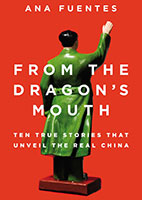
From the Dragon’s Mouth
From The Dragon’s Mouth: Ten True Stories that Unveil the Real China is an exquisitely intimate look into the China of the twenty-first century as seen through the eyes of its people. This is one of the rare times a book combines the voices of everyday Chinese people from so many different layers of society: a dissident tortured by the police; a young millionaire devoted to nationalism; a peasant-turned-prostitute to pay for the best education for her son; a woman who married her gay friend to escape from social pressure, just like an estimated 16 million other women; a venerated kung fu master unable to train outdoors because of the hazardous pollution; the daughter of two Communist Party officials getting rich coaching Chinese entrepreneurs the ways of Capitalism; among others. —Penguin{chop}{node, 3048, 4}
Media
04.02.13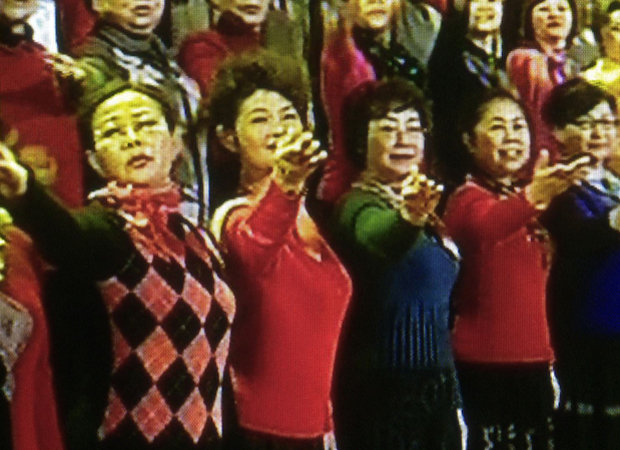
China Concerto
Before February 2012, when his name exploded onto the front pages of newspapers around the globe, most people outside of China had never heard of Bo Xilai, the now-fallen Communist Party Secretary of the megacity of Chongqing. But in the years...
Books
03.22.13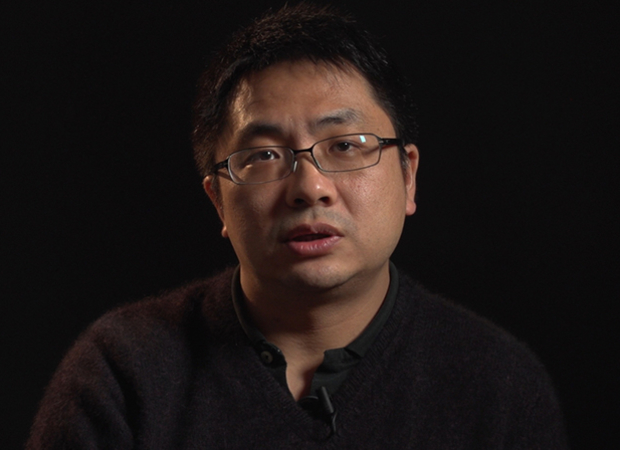
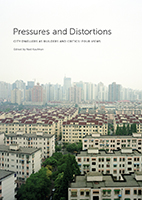
Pressures and Distortions
Pressures and Distortions looks at the design, building, and interpretation of cities from the point of view of their residents.The cities chronicled in depth include examples from China (Shanghai and Shenzhen), Latin America (Bogotá and Mexico City), and Indonesia (Banda Aceh). Shorter sections cover Lima and Rio de Janeiro. The authors show how residents respond creatively to environmental disaster, poverty, housing shortages, and surging urban population. They also show how governments, international relief agencies, architects, and planners can shape better urban environments. Throughout, residents present their experiences in their own words and through careful documentation of their living environments.Pressures and Distortions began in 2008 with the Research Program’s international call for proposals. A competitive process selected four teams, with researchers based in Mexico, Colombia, China, Australia, France, and the US. Each team received a research grant from Rafael Viñoly Architects and worked independently.With over 400 pages, Pressures and Distortions contains more than 500 original full-color photographs, plans, and drawings, as well as a DVD with over 100 video and audio recordings from the streets of Bogotá. —Rafael Viñoly Architects PC
ChinaFile Recommends
03.21.13Carbon Copy: Why China’s Air-Pollution Problem Isn’t Unique
Atlantic
“...in relation to the population density we see in China,” biologist Ramon Guardans says, “the U.S. and Europe did a much dirtier job industrializing.”
Media
03.21.13The Men Are Louder: A Gender Analysis of Weibo
Does Sina Weibo provide an equal platform for expression for both men and women in China? According to a recent study conducted by Sun Huan, a graduate student in Comparative Media Studies and a research assistant at the Center for Civic Media at...
Viewpoint
03.19.13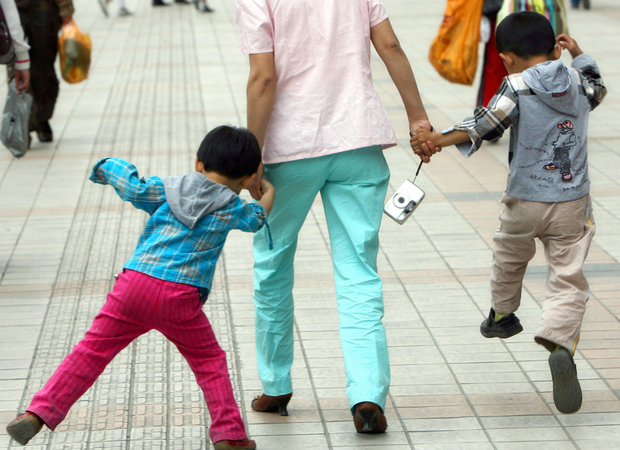
For Many in China, the One Child Policy is Already Irrelevant
Before getting pregnant with her second child, Lu Qingmin went to the family-planning office to apply for a birth permit. Officials in her husband’s Hunan village where she was living turned her down, but she had the baby anyway. She may eventually...
Conversation
03.13.13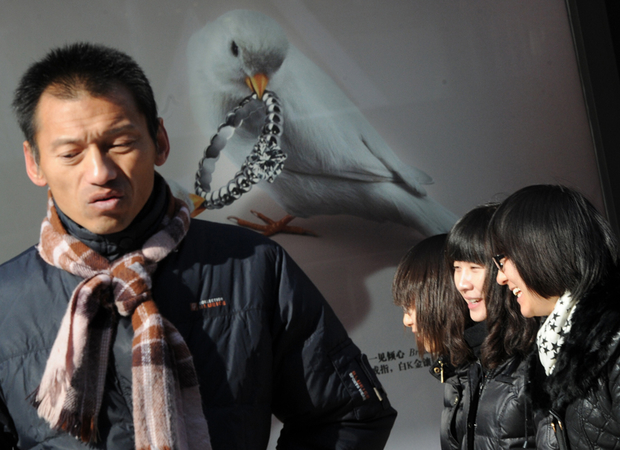
China’s Post 1980’s Generation—Are the Kids All Right?
This week, the ChinaFile Conversation is a call for reactions to an article about China's current generation gap, written by James Palmer, a Beijing-based historian, author, and Global Times editor. The article, first published by Aeon in the U...
ChinaFile Recommends
03.12.13Will The Middle Class Shake China?
New Yorker
A decade after recognizing that the middle class might be a signpost on the way to redemption, the government is failing to enact the will of the people it needs most, and thus it risks losing its greatest bulwark against the change it fears.&...
ChinaFile Recommends
03.08.13The Balinghou: China’s Generation Gap
Aeon Magazine
The raft of criticisms being levelled at the generation of children born in the 80s has very little to do with the actual failings of the young, but is a symptom of the yawning, and unprecedented gulf between young urban Chinese and their parents.
ChinaFile Recommends
03.08.13Could Electric Cars Reduce China’s Smog?
BBC
Looking at BYD Auto Company, China's central planners, and Warren Buffet's investment in the future of electric cars in China.
Conversation
03.08.13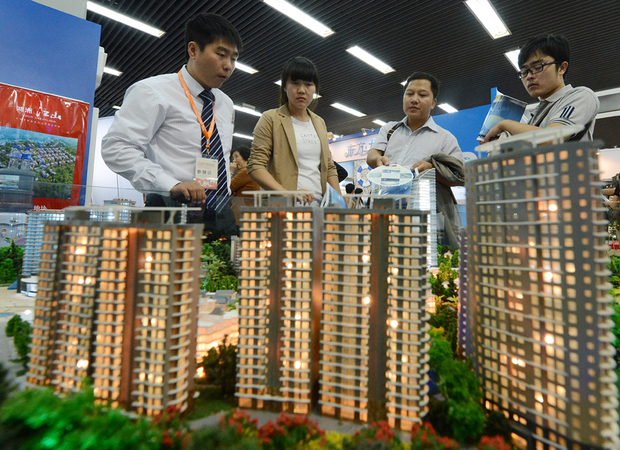
Will China’s Property Market Crash, and So What If It Does?
Dorinda Elliott:At this week’s National People’s Congress, outgoing Premier Wen Jiabao proclaimed that the government kept housing prices from rising too fast. Really? I wonder what my 28-year-old Shanghainese friend Robert thinks about that. He and...
ChinaFile Recommends
03.07.13Zhang Xin: China’s Real Estate Mogul
CBS News
Cultural Revolution child Zhang Xin talks with Leslie Stahl about her transformation from sweatshop worker to self-made billionaire.
Reports
03.07.13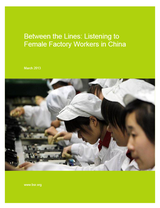
Between the Lines: Listening to Female Factory Workers in China
BSR
Women are crucial to China’s manufacturing sector. While women comprise more than 44% of the overall workforce, they represent about 60% of workers who migrate from rural areas to cities to work in factories. These female workers are diverse, with...
ChinaFile Recommends
03.05.13A Streak Of Brooklyn In Beijing
New York Times
Gulou residents have been joined by a new breed of Chinese and expatriate clad in skinny jeans, riding fixed-gear bikes and a loyal customer base for restaurants that offer locavore menu options.
ChinaFile Recommends
03.05.13China Could Fix Its Oversupply Of Men By Letting Gays Marry
Quartz
China has tens of millions more men of marriageable age than there are women. Legalizing same-sex marriage would help solve China’s hugely problematic gender imbalance.
ChinaFile Recommends
03.01.13China’s Divorce Rate Rises For Seventh Consecutive Year
International Business Times
According to a survey by Tsinghua University and lifestyle magazine Xiaokang, a total of 2.87 million marriages ended in divorce in 2012, which is a 7.65 percent increase from the previous year.
Environment
02.20.13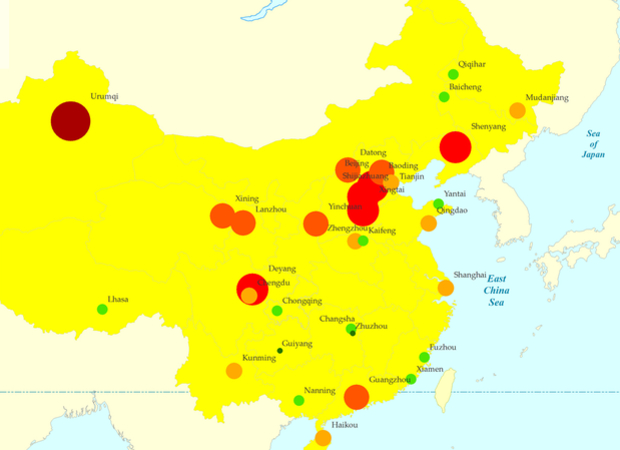
Air Quality in China: A Snapshot
Nearly five weeks ago, Beijing experienced its worst day of air quality on record: Levels of PM2.5—small particulates that can cause lung, cardiovascular, and respiratory disease—soared to more than thirty times the level considered safe by the...
Media
01.30.13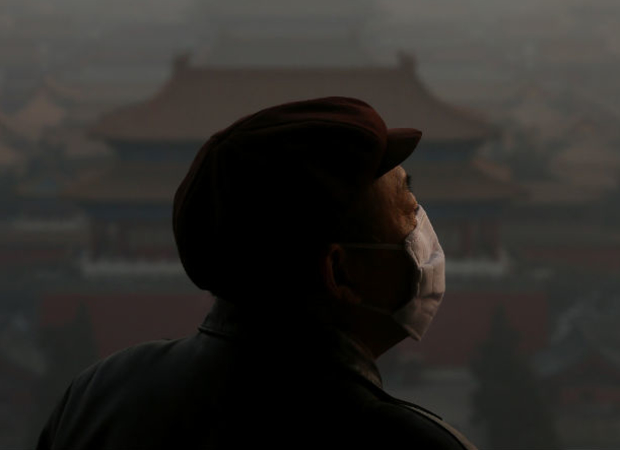
Chinese Web Erupts With Widespread Calls for Change as Beijing Endures Airpocalypse 2.0
Beijingers are choking on their air—again. Just seventeen days after Chinese cyberspace erupted with complaints about air so bad that it was “beyond index,” denizens of the Chinese capital awoke once again to a city blanketed with smog. Over the...
Books
01.24.13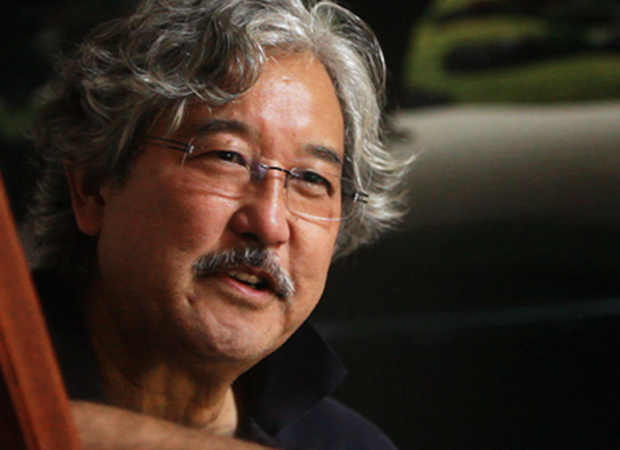
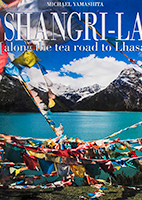
Shangri-La
The legendary Chamagudao, the Tea Horse Road, winds through dizzying mountain passes, across famed rivers like the Mekong and the Yangtze, and past monasteries and meadows in a circuitous route from Sichuan and Yunnan provinces in western China to the Tibetan capital city of Lhasa. Actually a network of roads, trails, and highways, rather than one distinct route, the Chamagudao once stretched for almost 1400 miles (2350 km)—a conduit along which the historic trade between the mighty Chinese empire and the nomadic Tibetans linked remote villages and ethnic groups. The Chinese military needed strong horses for their wars against Mongol invaders from the north, and the fiercely religious Tibetans desired tea for sacred rituals and sustenance. Once tea was introduced into Tibet around the 10th century, demand for it grew. Tea soon became a staple for Tibetans, especially when combined with their other staple, yak butter. But with Tibet’s extreme temperatures and altitudes, tea cultivation on a large scale was impossible. This set the stage for the tea-horse trade, which, by the 11th century, flourished along the Chamagudao, continuing until the 1950s. But getting these prized commodities to their growing markets was no easy feat. To transport the tea over the mountains meant many months of hard and dangerous travel for the hundreds of porters.Today, as Chinese culture merges with and even absorbs Tibetan traditions, the Tea Horse Road is a relic of a vastly different time. The Chinese are rapidly paving dirt roads to make highways for cars and trucks. Soon there will be little evidence of this once vital trade route. Though horses are no longer a military imperative for the Chinese army, Tibet has a new commodity that is in much demand in China. A homely caterpillar infected by a parasitic fungus has replaced the horse trade in Tibet. The yartsa gombu is prized for its medicinal qualities. Now Tibetans nomads drive Land Cruisers and motorcycles instead of horses, thanks to the profits they make collecting and selling the miracle mushroom worth more than gold. So trade continues, even though relics of the tea-horse trade are becoming harder to find. Following the Chamagudao, this book is a rare intimate look into the changing world of Tibet—both ancient and modern, sacred and commonplace, the rarefied and the gritty—before the legends and mysteries of the Tea Horse road disappear into the Tibetan mist. —White Star {chop}
ChinaFile Recommends
01.18.13Chinese Man Seeking Overdue Wages, Kills Himself, Injures 7 in Explosion
Xinhua
A man in south China’s Guangdong Province ignited explosives on his body, killing himself and injuring seven others, official media said.
Sinica Podcast
01.18.13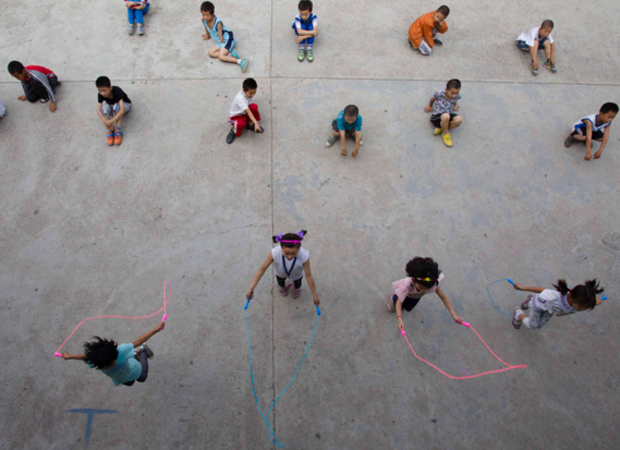
China’s Urban Billion
from Sinica Podcast
Lurking silently behind practically every story on Chinese economic growth over the last thirty years has been the country’s unprecedented shift from being an overwhelmingly rural society to what is now a largely urban one, with almost 700 million...
Environment
01.07.13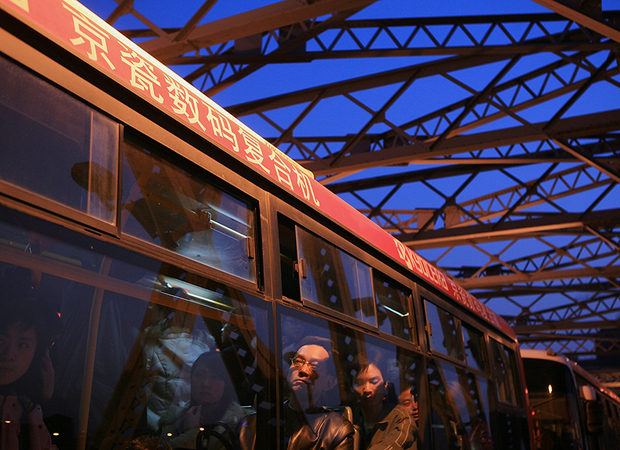
Car-Driving Officials in China Urged to Get on a Bus
from chinadialogue
China’s new leadership has asked government officials to travel simply and, in normal circumstances, not to close roads to ease their journeys. In a recent visit to the Qianhai area of Shenzhen, south China, incoming president Xi Jinping made sure...
Environment
01.02.13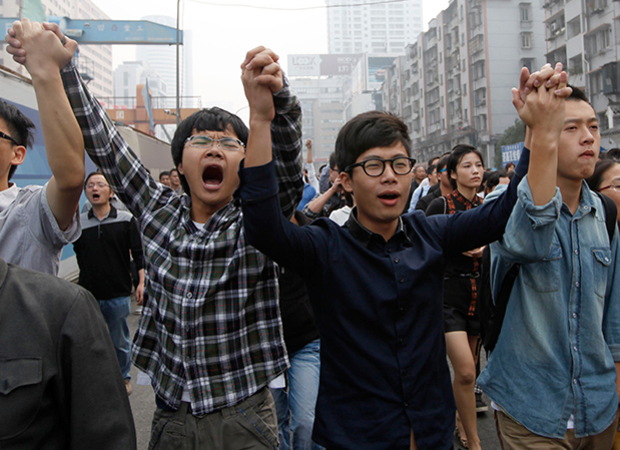
China’s New “Middle Class” Environmental Protests
from chinadialogue
China’s urban residents (or the new “middle class”) protest on the streets only very rarely. Discontent is expressed almost exclusively online, via angry typing. But this has changed over the last five years—protests have come offline and on to the...
Caixin Media
12.28.12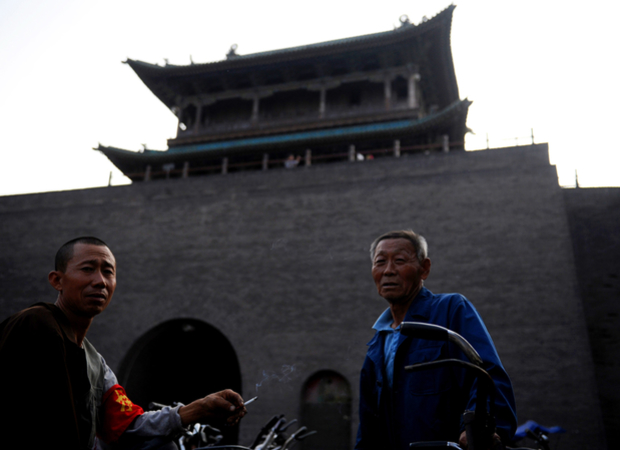
Uncertain Future for Architectural Treasures
Nestled between mountains and a winding river in a scenic corner of Shanxi province is Zhongyang County, the home of an exquisite Confucian temple built during the Ming dynasty.The colorful wooden temple graced this idyllic valley for hundreds of...





